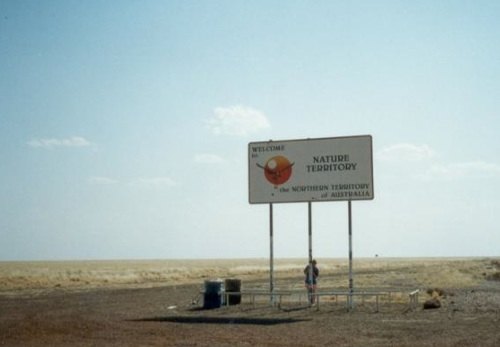Australia: Deaths Go Up After Speed Limits Imposed
Up until 2007, rural freeways in the Northern Territory, Australia had no speed limit. Claiming that speed limits were essential to saving lives, the state government imposed a 130km/h (80 MPH) limit on the Stuart, Arnhem, Victoria and Barkly highways and a 110km/h (68 MPH) speed limit on all other roads, unless otherwise marked lower. Despite the best of intentions, however, the number of road deaths actually increased 70 percent after the change — despite worldwide drop in traffic levels ( view chart).
The Australian motorist rights group compiled the latest road fatality data provided by the Northern Territory Police. In 2006, the last year without rural highway speed limits, the road toll was 44. Last year, with speed limits on all roads, the death toll grew to 75 ( view data, 400k PDF). The proliferation of speed cameras throughout the country has also increased the level of hazard faced by motorists.
In all of Australia, the death toll decreased by nearly a third between 1989 and 1996 — without automated enforcement. In the next eight years following the introduction of speed cameras, 1997-2004, fatalities only dropped ten percent. Between 2005 and 2007, the death rate began to skyrocket.
“A major reason for the failure of the policy is the extreme focus on the dangers of above the limit travel to the exclusion of nearly all other risk factors,” Brelsford said. “This implies that traveling below the speed limit is safe, leading to complacency, inattention and increased fatalities. Additionally, the current policy of hidden speed cameras has actually impaired driver awareness through adding to an increasing list of dangerous distractions.”
RoadSense advocates setting speed limits at the 85th percentile speed, or the speed at which the vast majority are comfortable traveling. The group suggests that government efforts would be better directed at the 98 percent of accidents that happen while traveling at or below the posted speed limit.
More by The Newspaper
Latest Car Reviews
Read moreLatest Product Reviews
Read moreRecent Comments
- Danddd Or just get a CX5 or 50 instead.
- Groza George My next car will be a PHEV truck if I can find one I like. I travel a lot for work and the only way I would get a full EV is if hotels and corporate housing all have charging stations.I would really like a Toyota Tacoma or Nissan Frontier PHEV
- Slavuta Motor Trend"Although the interior appears more upscale, sit in it a while and you notice the grainy plastics and conventional design. The doors sound tinny, the small strip of buttons in the center stack flexes, and the rear seats are on the firm side (but we dig the ability to recline). Most frustrating were the repeated Apple CarPlay glitches that seemed to slow down the apps running through it."
- Brandon I would vote for my 23 Escape ST-Line with the 2.0L turbo and a normal 8 speed transmission instead of CVT. 250 HP, I average 28 MPG and get much higher on trips and get a nice 13" sync4 touchscreen. It leaves these 2 in my dust literally
- JLGOLDEN When this and Hornet were revealed, I expected BOTH to quickly become best-sellers for their brands. They look great, and seem like interesting and fun alternatives in a crowded market. Alas, ambitious pricing is a bridge too far...


































Comments
Join the conversation